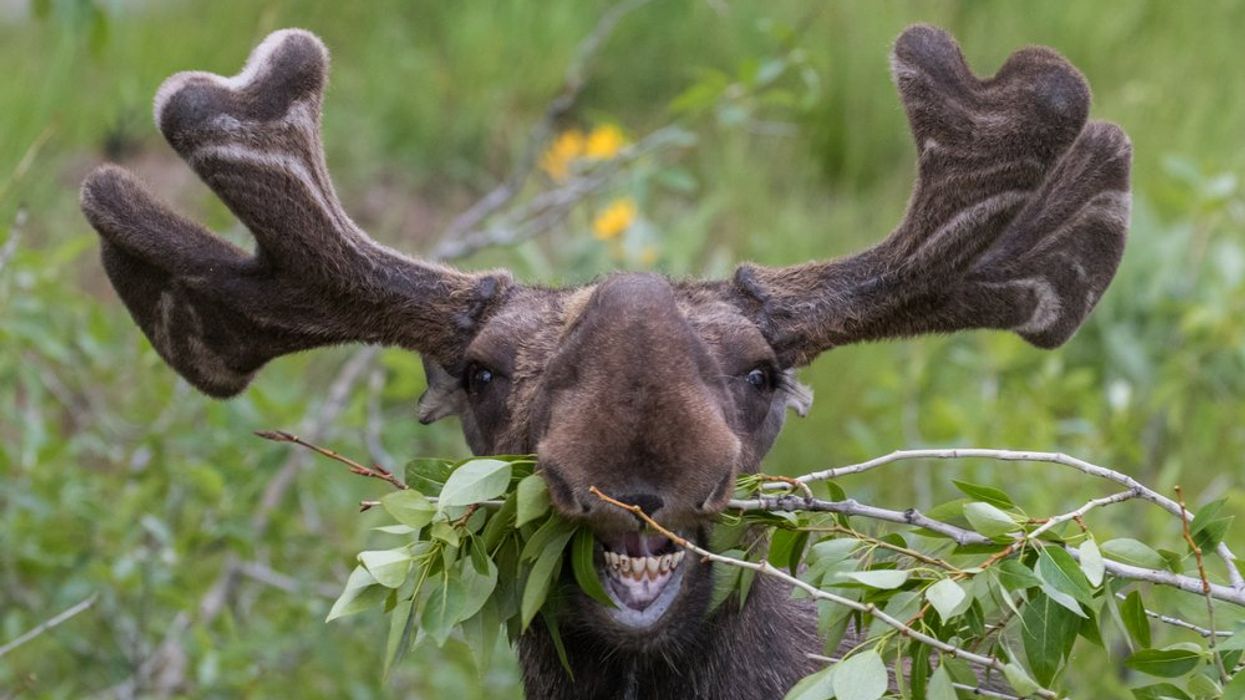One of the biggest potential sources of carbon emissions doesn't have four wheels — it has four legs.
A new study in the Journal of Geophysical Research: Biogeosciences found that moose release a significant amount of carbon into the atmosphere when they eat trees and other plant-life. Based in Norway, the research reveals that the species consumes roughly 10 percent of what the country's forest industry harvests.
“Moose are an ecosystem engineer in the forest ecosystem, and strongly impact everything from the species composition and nutrient availability in the forest,” Gunnar Austrheim, an ecologist at the NTNU University Museum and one of the study’s co-authors, said via press release. “A grown animal can eat 50 kilograms of biomass each day during summer.”
Norway is home to large swaths of Earth's boreal forests, comprised of sizeable trees in cold, northern areas. Boreal forests span across North America, Europe, and Russia near the North Pole, making them the largest land biome in the world. They are also carbon dense, and release ten to twenty times more planet-heating carbon pollution than other ecosystems.
Moose eat up to sixty pounds of vegetation per day, which releases vast amounts of carbon into the atmosphere. By tracking moose population and carbon emissions over eleven years, the study concluded that the animal reduced carbon storage outlets by up to 60 percent.
While forests can naturally recover over time, moose on the loose are likely to consume saplings and "young deciduous trees," preventing their growth. However, moose eating trees also clears forest floors, allowing light to reach under the canopy and reflect back, which keeps the biomes cool as they recover.
Francesco Cherubini, director of NTNU’s Industrial Ecology program and co-author of the paper, said that the research shines a light on how exactly animals can impact their ecosystems in an age where the effects of climate change are becoming more prevalent.
“One of the biggest unknowns that we have in our understanding of the climate system and the carbon cycle is potentially the effect of larger animals, and how they interact with carbon storage in vegetation,” he said. "This study gave us a great opportunity to quantify this effect. We have some numbers that we can relate to the regional carbon budget, and which actually show the importance of large animals like the moose.”
Xiangping Hu, another NTNU researcher and co-author, added that “it was really a surprise to see how much moose can influence vegetation growth, the carbon cycle, and the climate system."
- Climate Change Directly Affects Mental Well-being, Study Finds ›
- How Climate Change Leaves Women at Risk of Domestic Violence ›
- These Countries Will Be Treacherously Warm in 100 Years | AdvocateChannel.com ›
- Climate Change Is Behind At Least 17 Deaths on Mount Everest | AdvocateChannel.com ›
- Fungi Could Offer ‘Jaw-Dropping’ Solution to Climate Change | AdvocateChannel.com ›
- How Climate Disasters Cost $391 Million Daily For 20 Years ›
- Nearly 80 Bird Species Names With Racist Roots Are About to Be Changed ›
- DC Zoo's Pandas May Return After Biden Meets With Xi Jinping ›



















































